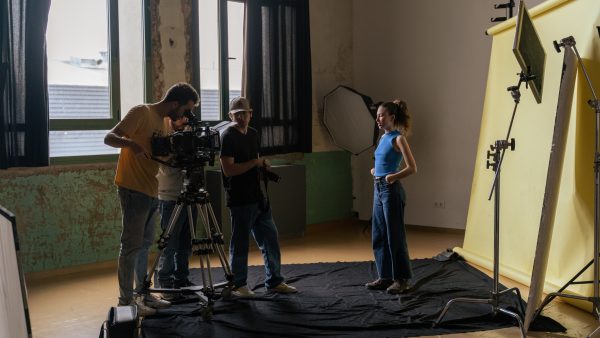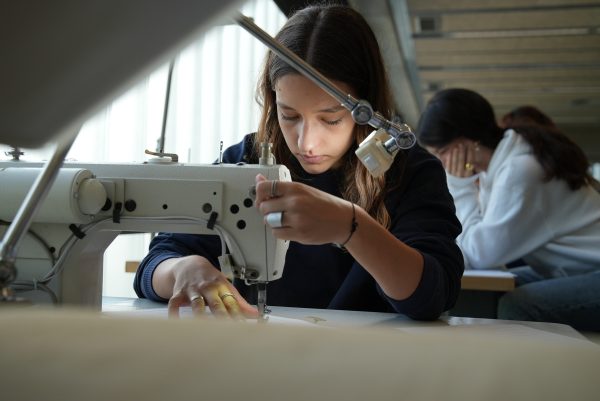
Spain is taking steps to match artistic university studies in Europe
The evolution of university art studies in Europe has progressed at a dizzying pace, driven by new technologies and the demands of a globalized society. A major change that should be highlighted is how the studies have gone from being technical to being interdisciplinary, combining artistic disciplines and areas of knowledge. Diversity and inclusion have become shared values within this educational field. Europe, has been at the forefront of artistic university studies with more than 100 years of history. This fact, however, has not been the same in Spain, which was not until 50 years ago that universities dedicated to the arts such as TAI Arts or ERAM began to emerge. There is currently a debate to equate higher artistic cycles to degrees, which highlights the desire to equate to university.
Currently, in Europe, we can highlight official artistic universities with a very rich diversity of offer. In Germany we find two emblematic examples, the Bauhaus-Universität Weimar and the Universität de Künste Berlin. Berlin University of the Arts is one of the largest and most diverse arts universities in the world. Currently, it has four faculties of Fine Arts, Architecture, Media and Design, Music and Performing Arts, as well as the Central Institute of Continuing Education/Berlin Career College, as well as the inter-university centers of Dance (HZT) and Jazz (JIB) thus covering the entire spectrum of the arts and related academic studies in more than 70 courses. With the right to confer doctorates and postdoctoral degrees, the Berlin University of the Arts is also one of the few art universities in Germany with full university status. Art and music teachers are also trained at the Berlin University of the Arts, the only university in Berlin where these subjects can be studied.
For its part in the United Kingdom, the University of the Arts London and the Royal College of Art stand out. The Royal College of Art is a public research university, specializing in art and design, located in South Kensington, London and offering postgraduate degrees to students from over 70 countries.
In Finland and Serbia we find offers with an interesting cultural variety, Uniarts Helsinki and the University of Arts in Belgrade.
Finally, in Spain the offer is reduced to two options, the Escuela Universitaria de las Artes in Girona, and the Escuela Universitaria de Artes in Madrid.
In all of these we find a very varied offer of official university degrees, such as design, communication, fine arts, illustration, photography, fashion, theatre, cinema, TV, digital media, music, writing and dance.
In Spain, official artistic studies have not yet been incorporated into the university in a standardized way. The first offers are just emerging, most of which are located in the big Spanish cities such as Madrid and Barcelona. In Catalonia, ERAM is positioned as a pioneer in official university artistic studies with the offer of the Degree in Fashion, the Degree in Performing Arts and the Degree in Audiovisual and Multimedia Communication, thus decentralizing them from the big cities.
The importance of artistic studies at the University: A space for creativity, innovation and critical reflection.
In an increasingly complex and technological world, the importance of artistic studies at University is often underestimated. However, its presence in higher education is crucial for several reasons:
- Encourage creativity and innovation: The arts allow us to explore new forms of expression, challenge conventions and think critically. In a university setting, arts students have the opportunity to develop their creativity and innovative thinking, essential skills for solving problems and adapting to a constantly changing world.
- Develop critical thinking and analysis: The study of the arts invites us to reflect on the world around us, to question what we take for granted and to construct a critical vision of reality. Through art, students learn to analyze information, identify biases, and formulate sound arguments—skills necessary for active and responsible citizenship.
- Enrich our understanding of the world and our culture: The arts are a reflection of our society, they show us its history, its values and its contradictions. Studying art allows us to better understand the world around us, appreciate cultural diversity and develop empathy for others.
- Enhance communication and collaboration: The arts offer us a universal language to communicate, connect with others and share ideas. At the University, artistic studies encourage collaboration between people from different disciplines, creating synergies and enriching the learning process.
- Prepare for a wide range of professions: The skills and knowledge acquired in artistic studies are increasingly valued in the labor market. Professionals from various sectors, such as advertising, design, communication, education or tourism, need the creativity, critical thinking and analytical skills that are developed in artistic studies.
In short, the presence of artistic studies at the University is essential to form complete citizens, critical, creative and prepared to face the challenges of today’s world. In addition, it enriches university life and provides an indispensable cultural dimension for a healthy and dynamic society.




